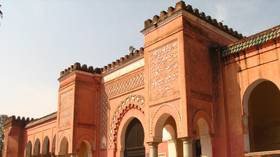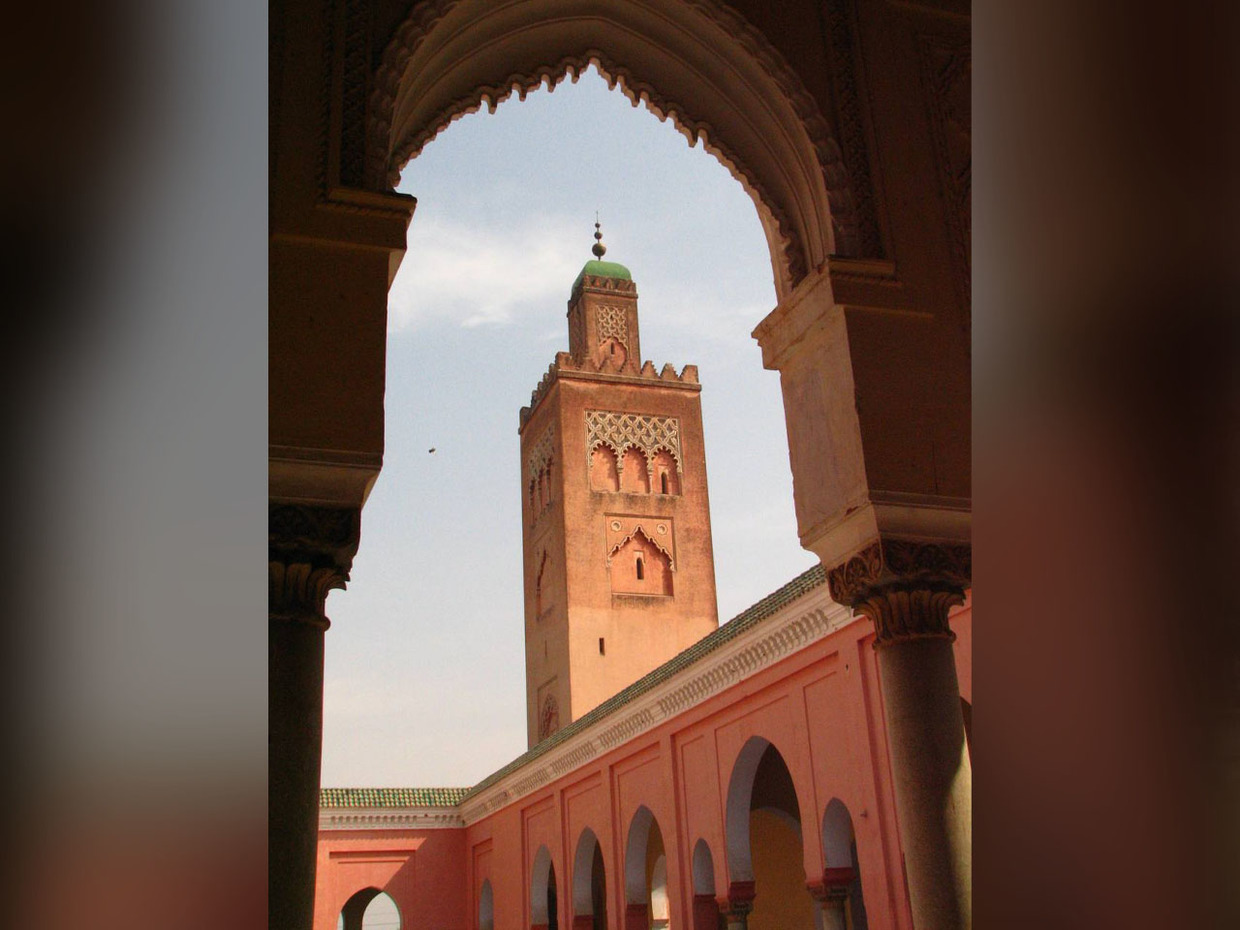The Global South through the ages: How the modern idea was demonstrated in India hundred years ago

Two months after a devastating earthquake, Morocco has slowly begun rebuilding and restoring.
While a great deal of history was reduced to rubble, the country’s most iconic structure, the Kutubiyya Mosque, a 12th century grand mosque in its cultural capital Marrakesh, was spared.
Through the centuries, the mosque’s towering 226-foot minaret, known as the ‘Roof of Marrakesh’, has proved to be an inspiration for several replicas, such as the Hassan Tower in the country’s capital Rabat, and La Giralda in Seville, Spain.
In the early 20th century, it inspired Sikh ruler Maharaja Jagatjit Singh of the erstwhile Kapurthala kingdom, now a district in the north Indian plains of Punjab state, to construct something similar for his Muslim subjects.
Morocco in Punjab
The Maharaja (a Hindu prince, ranking above raja, ruling a historically native state) commissioned French architect M. Manteaux for the task, which took four years and a staggering Rs 400,000 (in the 1920s, about $133,333.33) to complete.
On March 14, 1930, nearly 5,000 miles away from Morocco, the Moorish Mosque, a near-replica of the Kutubiyya Mosque, was inaugurated by the Maharaja to wide acclaim, in the presence of Nawab Sadiq Mohd Khan Bahadaur, ruler of Bhawalpur, now in Pakistan. The marble plaque at the mosque says the ‘congregation numbered over a lakh’ (100,000) that day.

In 1934, the Moorish Mosque was famously visited by the Aga Khan (the leader of the Shia's Ismaili sect, the second-largest sect in that branch of Islam) who hailed the Maharaja’s vision and spirit of secularism. He further described the mosque as a ‘work of art that will go down to future generations as a spiritual message from the Islam of the West to the Islam of Asia of which the Punjab was the heart and core.’
Jagatjit Singh was the last ruler (1877-1947 AD) of Kapurthala. A seasoned globetrotter, polyglot and Francophile, he studded his kingdom with bits of French and European architecture, the most famous being the sprawling Jagatjit Palace, now the Sainik School, which was built on the pattern of the Palace of Versailles.
A touch of Greece could be seen at the Jagatjit Club, which is designed on the lines of the Acropolis in Athens, while the clover-arched Villa Buona Vista,built as a hunting lodge, is as Italian as its name.

The Moorish Mosque, however, was the most unique with its single minaret, flat roof and a medley of Maghreb colors. It continues to be one of its kind in an Indian landscape dotted with structures built in marble or red sandstone bearing pointed arches, bulbous Indo-Saracenic and Persian domes.
Moorish architecture
Morocco has an enviable coastline running along the Mediterranean Sea and the Atlantic Ocean. Cultural convergences via trade, conquests and colonization over centuries led to its distinctive architectural language. Often referred to as Moorish architecture, its grammar is a heady blend of Berber, Arabic, Spanish, Roman and French accents.
The classic horseshoe or keyhole arch is the signature element of Moorish style. Other characteristic features include elaborate ‘tastir’ and ‘tawriq’ (geometric and floral patterns), Arabesque (repeating geometric pattern signifying eternity), ornamental Islamic calligraphy, ’zellij’ (ceramic tile mosaic), ’tazouakt’ (traditional wood painting), and ‘tadelakt’ (incised waterproof plaster with a satin finish).
The Kutubiyya Mosque proudly showcases almost all these attributes. Though far smaller in scale, these elements have remarkably been incorporated in the Moorish Mosque. Its riveting layout and profusion of colors overpower the senses. The eyes wander from the serene salmon-pink facade, ornamented with intricate incised white plaster lattice, to the single, towering cuboidal minaret at one end of this flat roof structure.

Upon stepping inside, the Moroccan influence comes to the fore. The marble courtyard is flanked with arcaded corridors, their symmetrical horseshoe arches glowing in burnt orange hues, offset by vertical columns in mustard and aqua blue tones. There are pavilions on either end that hood fountains. The sloping roofs as well as the uniquely octagonal wooden dome, whose interiors have fine artwork, are topped with glazed teal tiles. Hand-painted walls of the ‘mihrab’ (niche that indicates the direction of Kaaba in Mecca) originally done by students from the Mayo School of Arts, Lahore, add to the impressive aesthetics. Since its consecration, Friday prayers have regularly been held there.
Hidden beauty
Bashful Kapurthala is far removed from the rich jewel-tone palette Morocco offers, which attracts millions from around the globe. ‘If you visit Morocco once, you'll always be raring to go back. It’s quintessentially romantic with jaw-dropping locales. What's overwhelming is its stunning architecture,’ say Faisal Khattak and his wife Ashwinder Sandhu, who were traveling through the country weeks before the quake.
‘We have both grown up in the Indian subcontinent and have seen a spread of Mughal architecture. This was our first experience of the Moroccan style and we were blown away by it, especially its arches. We found them very enchanting,’ said Sandhu, who spent her teenage years in Punjab but remained unaware that a few hundred kilometers from her hometown, a sliver of Morocco was shining bright.
So quietly has Kapurthala tucked away its jewel in the crown that very few know about it. However, that seems set to change now.

New direction
The impressive structure was a picture of neglect for years until it was painstakingly restored to its original beauty in 2018 by acclaimed conservation architect Abha Narain Lambah, whose firm won the prestigious HUDCO best restoration award for the project.
“The moment I entered the ‘sahn’ (courtyard), the architecture took my breath away. It was strikingly similar to Morocco, a country I had visited a few years back. The restoration of the Moorish Mosque has been one of my most satisfying and favourite projects,” said Lambah. She insists there is no architectural parallel to the Moorish Mosque in India, and she had to be extremely careful with research at every step.
‘This was a comprehensive conservation project and the challenges were immense. The Maharaja's grandson Brig Sukhjit Singh proved to be a great source of information, particularly where colour and tone were concerned, as most archival material was in black and white. He even managed to retrieve the original chandeliers,’ she said. Inch by inch, Lambah and her team of skilled artisans restored the Moorish Mosque back to splendor.
Recently, the state and central governments have taken note of the town's tourism potential. Kapurthala and Amritsar are two districts from Punjab chosen this year for redevelopment under Swadesh Darshan 2.0, India's new domestic tourism policy. Accordingly, a fund of Rs 700 million ($8.4 million) has been sanctioned for Kapurthala and work has started on the restoration of historical buildings. The aim is to enhance Punjab’s heritage circuit and offer an attraction beyond its popular pilgrimage trail. As Morocco reconstructs its lost history, miles away Punjab is gearing up to receive a new influx of visitors for its built heritage.














